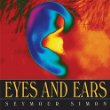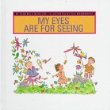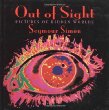Search Results: Returned 11 Results, Displaying Titles 1 - 11
-
-
c2004., Mason Crest Publishers Call No: 362.4 Sou Availability:1 of 1 At Location(s)Table of contents Series Title: Youth with special needsSummary Note: Presents a story that provides insights into the challenges faced by children suffering with visual impairments and blindness, and the impact of the disability on family members and friends, and features facts about different types of vision problems, their diagnosis, treatment, and the adjustments that are required to live with them.
-
-
c2019., Pre-adolescent, Black Rabbit Books Call No: 133.901 3 Availability:1 of 1 At Location(s) Summary Note: With accessible text and real-life stories, readers will explore the near-death stories they love to fear.
-
-
c2003., Primary, HarperCollins Call No: 612.8 Availability:1 of 1 At Location(s) Summary Note: Presents an introduction to the anatomy of the eye and ear, and describes how those organs function, and someways in which they may malfunction, and includes information on how the brain is involved in seeing and hearing.
-
-
-- Light and seeingc2008., Juvenile, Smart Apple Media Call No: 535 Availability:1 of 1 At Location(s)Table of contents Series Title: Essential scienceSummary Note: Simple diagrams and easy-to-follow text explain various aspects of light, including different sources of light, how it travels, how the human eye sees light, what causes light to reflect, the link between light and color, and other related topics.
-
-
c1998., Child's World Call No: 612.8 4 Availability:1 of 1 At Location(s) Summary Note: Rhyming text points out that the eyes can see all things in the world including colors, shapes, and sizes.
-
-
2004., Primary, Children's Press Call No: 612.8 4 Availability:1 of 1 At Location(s) Series Title: My bodySummary Note: Simple text introduces the functions of the human eye, as well as tools that can help people who have vision problems.
-
-
2001., Primary, PowerKids Press Call No: 612.8 4 Edition: 1st ed. Availability:1 of 1 At Location(s) Series Title: My bodySummary Note: Explains the parts of our eyes, how they allow us to see in color and darkness, the importance of good vision, and various eye problems.
-
-
2000., SeaStar Books Call No: 612.84 Availability:1 of 1 At Location(s) Summary Note: Shows pictures of objects which are too small, too far away, or too fast to see without mechanical assistance such as microscopes, telescopes, X-rays, and other techniques.
-
-
1995, Juvenile, G. Stevens Call No: 612.8 Plu Availability:1 of 1 At Location(s) Series Title: Exploring our sensesSummary Note: Photographs and text illustrate how we use our eyes to drive, read, and see things big and small and far away or close up.
-
-
c1995., Raintree Steck-Vaughn Publishers Call No: 612.8 4 Availability:1 of 1 At Location(s) Series Title: First starts












